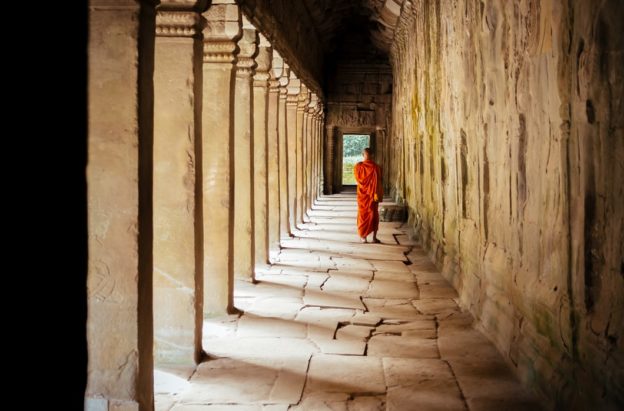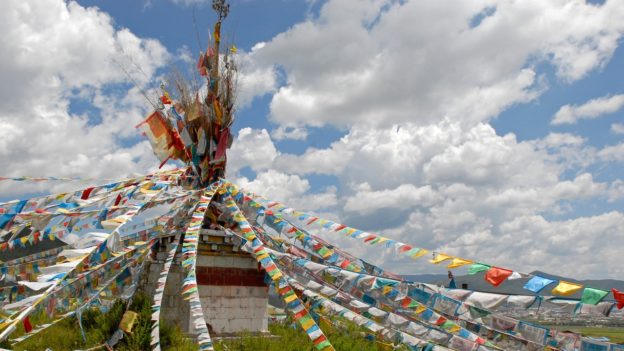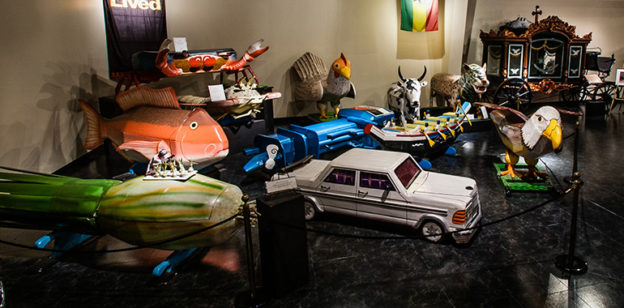6 Funeral Trends Happening In Different Cultures Around The World (And What We Can Learn From Them)
July 29th, 2019
All over the world, people, businesses and leaders all around the world are adapting to our growing needs surrounding death and funerals.
And as we grapple with environmental considerations and cultural shifts, we see the funeral profession responding with innovation.
Many cultures are finding the balance between embracing technology while honoring ancient traditions. Others are bringing new insights and radical solutions to challenges we face globally.
By remaining open to other cultures, we can learn a lot about how to move through the challenges we all face.
We hope these six trends — and the lessons they teach us — bring you some inspiration on ways your funeral home can adapt to the changing needs of today… and tomorrow:
1. South Korea: Departed Beads
A country known for its gorgeous colors, many South Koreans have started transforming loved ones ashes into beautiful beads they lovingly display in glass containers or decorative dishes.
The beads are typically blue, pink or black and look like glass, they are easy to divvy up and store in numerous creative ways. This practice is not just for aesthetics. With cemetery space quickly running out, Koreans are looking for modern ways to honor the dead without burial and eventual relocation. This is becoming a trend which is taking off globally as many countries face the problem of sparse cemetery space.
The Lesson: Meeting limitations with creativity brings beautiful solutions and innovation into the world.
2. Tibet – Sky Burial
Sky burials are actually an ancient practice that are still trending in Tibet, Qinghai, Sichuan, Mongolia, Bhutan and parts of India. Sky burials, known as Jhator, are viewed as a spiritual practice born from necessity. With the earth being too rocky to permit burial and wood too sparse for cremation, the Tibetans got creative.
In sky burials, loved ones are laid out and offered to giant griffon vultures who consume all of the parts body. As grueling as this sounds, any eye witness accounts remarked on the fact that those tending the bodies did not perform their task with gravity or ceremony, but rather talked and laughed as during any other type of physical labor.
According to Buddhist teaching, this makes it easier for the soul of the deceased to move on from the uncertain plane between life and death onto the next life. For many Tibeaten Buddhists, the ceremony demonstrates important teachings on the impermanence of life. Jhator is also seen as an act of compassion and generosity from the deceased, as they are offering food so the birds may continue to live and thrive.
The Lesson: Treating our departed with compassion doesn’t look a certain way. Being open to the other ways cultures treat their dead with compassion allows us to open up around the ways we look at death in general, offering up freedom of thought and expression along the way.

3. Ghana – Fantasy Coffins
In Ghana there is a small group of master craftsmen who are making “fantasy coffins”. These fantasy coffins are unique and lively caskets that take on unusual shapes. The Ga people who practice this tradition believe that life continues after death, and their ancestors are far more powerful than the living, bestowing gifts upon those who are most deserving.
As a way to pay respect and foster a positive relationship with the recently departed, the surviving family members come together to commission these one-of-a-kind coffins. The design of the coffin typically represents the deceased’s career or status in life. In this way, these are more than just caskets… they are pieces of art that represent reverence and celebration of a life that has not ended, but rather just begun.
The Lesson: Caskets still remain as a beautiful way to celebrate one’s life… and looking at the way they maintain relevance in other cultures gives us inspiration to see all the ways we can maintain relevance in our own.

4. United States – Eternal Reef
You’ve heard about burial at sea… but this is taking it to the next level! In this process of making eternal reefs, cremains become a base for coral reefs that are both beautiful and restoring the health of the ocean. Part of the conservation burial movement, Eternal Reefs aims to “preserve and protect the marine environment for the benefit of future generations”, according to their website. It’s a win-win for the environment and for the deceased!
To create these unique memorials, the ashes of the recently parted are mixed with concrete and molded into a holey ball that will soon be teaming with coral reef life. Families are encouraged to personalize the experience by placing their handprints and a bronze memorial plaque in the wet cement before burial. Later, they may visit the burial site to witness the vibrant ocean life either above water from a boat, or take a dive down to see it up close in action.
The Lesson – Moving forward with the times, creating spaces where death can renew and protects new life is one of the biggest gifts for our planet. Especially in a world where our ocean life is struggling and could use some support from inventive folks like Eternal Reef.

5. Tokyo, Japan – Ruriden Columbarium
In Tokyo, Japan urban density and cultural shifts have deeply impacted the funeral profession. Not only is there limited room for traditional burial practices, but with a declining birth rate, there are also less young people to tend to the grave sites and carry on the legacy of the traditional and customary family plot. Taijun Yajima, Koukokuji temple chief priest, has offered a solution to this issue… a colorful and high tech Ruriden Columbarium.
With its entrancing beauty, each crystal Buddha statue represents a current or future departed loved one whose ashes will be interred for 33 years before being buried in a communal site beneath the Buddhist temple.
Living family members swipe a chip card at the front door which allows them access the columbarium. When they enter, the columbarium lights up their loved one’s Buddha so they know where to pay their respects. However, many being interred at Ruriden choose to be here because they don’t have family and appreciate the company they’ll keep in the afterlife.
To further explain this, Taijun Yajima says: “The people who usually register for a plot here are either single or don’t have children—they feel sad that they don’t have family, but they know that once they’re dead, they’ll be surrounded by others like them in Ruriden. All these glass Buddha statues are like your compatriots, and you’ll be there with them once you die. If you can think that you’re going to be with your friends once you’re dead, you won’t be sad.”
The Lesson – Embracing technology isn’t just linear and logical… it also creates community, simplicity and elegance.
6. Italy – Capsula Mundi
How about being buried in an egg that turns you into a seed for a mighty tree? That’s exactly what the visionaries of Capsula Mundi have created with their eco-friendly burial container. The latin name refers to the “transformations of our body between the mineral, vegetal and animal worlds: the three key elements of life on Earth.”
Capsula Mundi is part of a global movement towards reclaiming the natural cycle of death and rebirth, honoring our part in the great cosmic rhythm. They also focus on pre-need planning as the tree is picked out by the person it will eventually be planted over. Capsula Mundi is encouraging people to be engaged with the process of dying through reminding us that our death breeds new life, that we return to the fetal egg we once were born from to be reborn again as new life.
The Lesson: By being present with the process of dying, we lend ourselves to the sacredness of life and death.
Putting it all together
As you can see, although every culture varies greatly, we share so much in common as humans. The need to be part of something greater and to honor the dead binds us all. Funerals are a time of reverence and celebration. They offer an opportunity where we can blend the traditional with new innovations and cultural practices. And when we look at all the ways death can be honored, we open up to new ways for ourselves to do the same.
What cultures are you most inspired by? We would love to hear what lessons you’ve learned from them!
——————————————————————————————————————-
PS. Want your funeral home website to feel as adaptable as you’re feeling right now — ready to embrace all the ways families are looking to feel supported by your funeral home?
Check out f1Connect, the funeral profession’s most potent website platform! Click here or give us a call at 1-800-798-2575 to talk to one of our Website Success Specialists today!




Hello,
My name is Ivana Balentic and while going through your website I saw you mentioned our friends at Popular Mechanics (https://blog.funeralone.com/industry-trends/funeral-trends-cultures/).
I’m curious is it possible to sponsor the mention of my blog?
All the best,
Ivana Balentic
Hi there Ivana, we’d love to hear more about what you do!